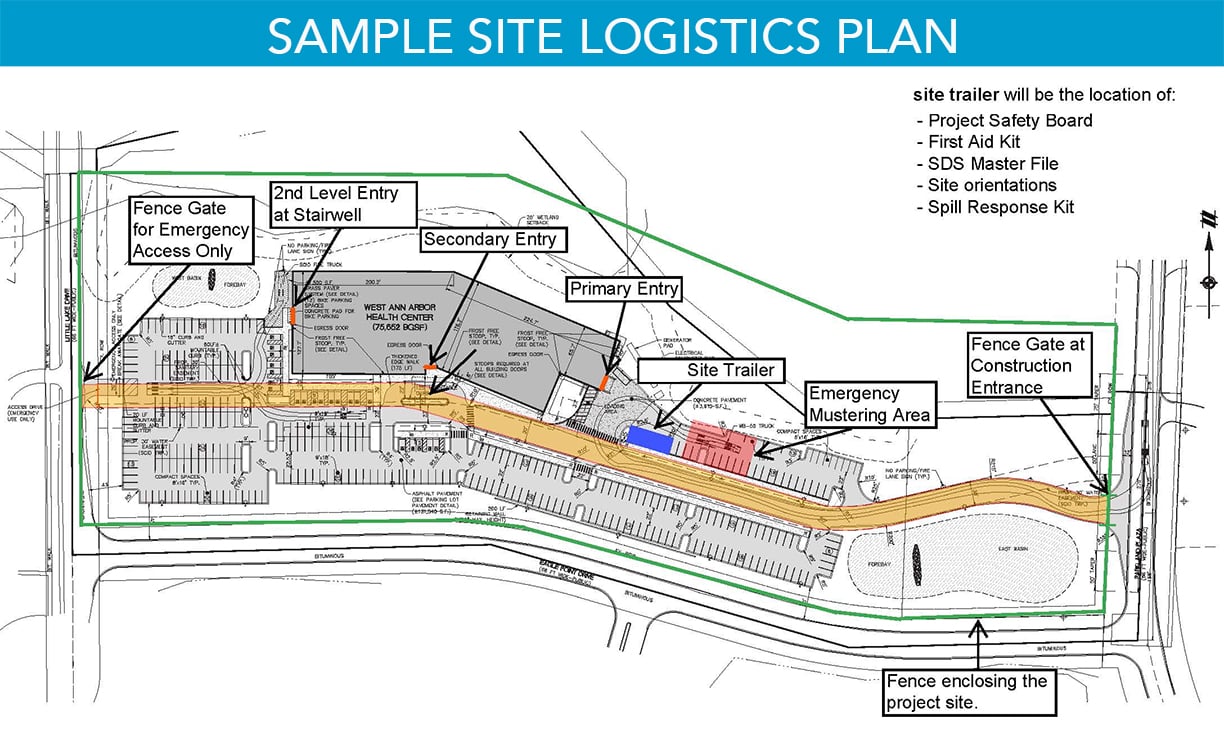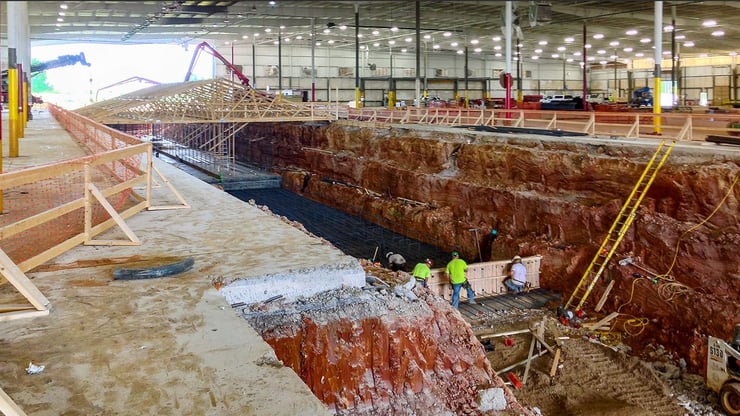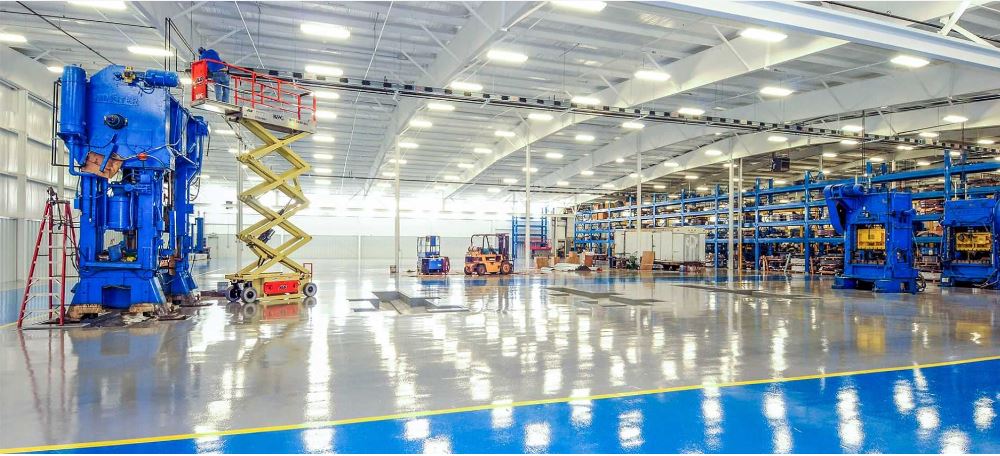Construction projects are vital to increasing production, improving employee moral and enabling the growth of your company. The need to construct or renovate can occur numerous times throughout the life of your company, and it's no secret that significant projects can take months—risking lost production time and potentially forcing clients or employees to look elsewhere to meet their needs.
Then, how do you confidently embark on a construction project while ensuring your company remains safe and operational throughout the process? The simple answer is: choose the right general contractor.
Safe and efficient construction can take place even in occupied facilities. For decades, Brindley Construction has completed renovations, ground-up construction and expansion for our industrial clients, and, as a result, we have sharpened our skill set and narrowed down the best practices and methods to minimize downtime for our clients.
With every project we have completed, we have worked closely with facilities and operations managers to coordinating their ongoing operations with our pre-construction and construction teams. Here are some of the lessons we have learned so that you will be able to keep your facility running without downtime throughout the entire construction process.
Working Out The Logistics
 Access roads, parking lots and shipping/receiving areas are imperative to the operations of a manufacturing facility. Without a clearly defined flow of traffic outside your building, operations inside can be disrupted. When you add additional traffic, such as construction deliveries, onsite construction staff and equipment, you run into variables that can impact your current traffic pattern. Does your current site have additional space for the contractors to park onsite or do they need to park offsite? Another item to consider is where the onsite construction team will likely need space to setup their onsite field office and material storage.
Access roads, parking lots and shipping/receiving areas are imperative to the operations of a manufacturing facility. Without a clearly defined flow of traffic outside your building, operations inside can be disrupted. When you add additional traffic, such as construction deliveries, onsite construction staff and equipment, you run into variables that can impact your current traffic pattern. Does your current site have additional space for the contractors to park onsite or do they need to park offsite? Another item to consider is where the onsite construction team will likely need space to setup their onsite field office and material storage.
To prepare for an onsite team, speak with your construction team and create a plan at the very beginning of the project. Evaluate your site and which locations are essential for your operations. Are there any areas you can sacrifice space? Once those questions have been answered, work with your team on a site logistics plan. The plan can be a map of your site with labeled areas specifying where the jobsite trailer can be located, where the building materials can be stored and any construction-related equipment. Fencing and signage will help keep all parties safe and reduce confusion.
If you experience high traffic flow around your parking lot and loading docks, work with your construction team to identify a specific route for construction-only traffic to minimize disruptions. If you cannot determine a route, work with the team to plan a specific delivery schedule that will not interfere with your operations.
Working In Conjunction With Operations
Oftentimes, the most difficult obstacle to face during construction will be managing operations going on inside your facility. Work with your construction team to develop a plan that balances your needs as well as the construction activities to come. With your project's scope, there are multiple avenues that can be taken to accomplish your goal.
Pictured here is the pit excavation during the concrete pour showing the scale of the project at North American Stamping Group in Portland, Tennessee.
Charlie Evans served as Brindley Construction's Project Manager on the North American Stamping Group press pit addition. "Modifications and additions are routine for Brindley Construction, but the size and location of the excavation required for the addition of the press pit and foundations posed several challenges. First, the excavation site was inside an existing building. While this alone was not an issue, the finished size of the proposed pit was 550 feet long, 50 feet wide and 35 feet deep–a massive undertaking. Care had to be taken to prevent damage to the existing building’s foundation while digging, setting up forms and pouring new concrete walls for the press pit and foundations."
The Design- Build Approach
With any construction project, a great deal of planning is essential. To be efficient with your planning sessions, having everyone on board in the beginning—including all of the project's stakeholders—will maximize efficiency. By implementing a design-build approach, you will create a more collaborative environment between you, the designers and the construction team—encouraging each member of the team to hold their weight on the project and leaving less room for error during the construction process. When all the players know their responsibilities, there will be more time for you to focus on the day-to-day activities that come with your facilities operations. In addition, with the design-build method, there is a single contract with the general contractor who oversees the entire project from design to close-out. Having a single source of responsibility makes it easier on you, rather than forcing you to manage multiple entities in an effort to complete the project on time and within budget. Learn more about the design-build method and how this approach can help you on your next project.
Phased Construction Approach
Whether your facility operates a portion of the day or 24/7,a phased approach may be beneficial. With a phased approach, the construction team will work on certain portions of the facility that require renovating. We have worked with manufacturers that have multiple areas that need renovation, so we section off and decommission one area at a time, to allow construction to be completed without shutting down the rest of the facility. Once that area is completed, operations can continue in that location and the construction team will move on to the next area. This ultimately allows you to give up smaller portions of space in your factory while the majority of your operation continues to run. Though a phased approach allows operations to continue with fewer interruptions, planning facility improvements around slowdowns or times when operations are halted further reduces construction's impact on your overall output.
Construction During Non-Production Time
If your facility only operates certain parts of the day or week, planning construction around those down-times would be the best approach to limit disruption and keep more of your facility operational.
One thing that is important to remember is that construction can generate a lot of dust and debris. The area under construction at your facility must be properly sealed off to ensure that particles from the debris do not saturate other areas of the facility. The success of this approach comes down to how much physical space there is between your operations and the location and scope of the construction.
Selecting Your Construction Team
The most important decision you can make when deciding to proceed with a construction project at your facility, is selecting who your contractor will be.

Quality Of Work And Experience
During the interview process, it is important to ask what other manufacturing jobs the firm has worked on, what approach to the project they had, and if they faced any challenges, how they overcame them.
Do not hesitate to ask for references from prior projects they have completed. The conversations you have with previous clients can give you insight into how the project was run and how the team was managed. Here at Brindley, we pride ourselves on the quality of work we bring to each project, and love when our clients offer testimonials and are a point of reference we can direct new clients to.
Click here to see a few of our client testimonials from our portfolio.
Who Is On The Contractors Team?
A contractor with great references is important, however, it is also beneficial to know the team that will be working on your project. The project manager and superintendent selected for the job will have a big impact on how the job is run and how efficiently the project progresses.
Brindley Construction stresses the importance of communication between the owner and the construction team. We keep open communications between the field crew and the client with regular meetings, walkthroughs, progress update calls, and any changes to the scope are communicated and approved by the customer before execution.
In addition to the team, the subcontractors on the project should be best-suited for the task at hand. if your general contractor has completed many project similar to yours in the area, the likelihood they know local subcontractors experienced in manufacturing construction will be strong. The contractor can leverage these relationships to form a team for your project that underscores the importance of quality, safety and proper planning.
And, Finally...
Making the decision to take on a construction project at your facility can be daunting, however, following the tips outlined here can help alleviate some of that stress. Selecting a contractor experienced in manufacturing and industrial construction can be what determines how your project will go.
Brindley Construction has been in business for 61 years and, when it comes to completing manufacturing projects—from renovations in fully operational facilities to ground-up construction—we have the experience and know-how to handle even the most challenging of industrial projects.
Our hands-on, design-build approach brings all teams together from the beginning to strategically plan the project in the most time-conscious and price-efficient way for everyone involved.






Leave a Comment